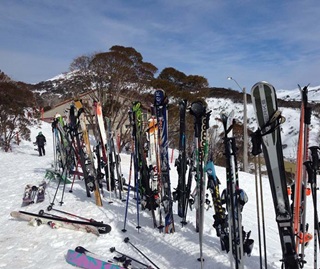Environmental carrying capacity
Environmental carrying capacity is the scale of human activity that can take place in an area without degrading its environment below an acceptable level.
The review in Kosciuszko
 The National Parks and Wildlife Service (NPWS) manages the alpine resort areas in accordance with the Kosciuszko National Park Plan of Management. These areas include the resorts of Thredbo, Charlotte Pass, Perisher Range and Selwyn, and the lodges within some of these resort footprints.
The National Parks and Wildlife Service (NPWS) manages the alpine resort areas in accordance with the Kosciuszko National Park Plan of Management. These areas include the resorts of Thredbo, Charlotte Pass, Perisher Range and Selwyn, and the lodges within some of these resort footprints.
The plan of management limits the number of beds each resort may provide for visitor accommodation. However, NPWS is looking at better ways of measuring and regulating the environmental carrying capacity so is carrying out a review with public consultation.
This review may lead to an amendment to the plan of management and different ways of handling development proposals.

